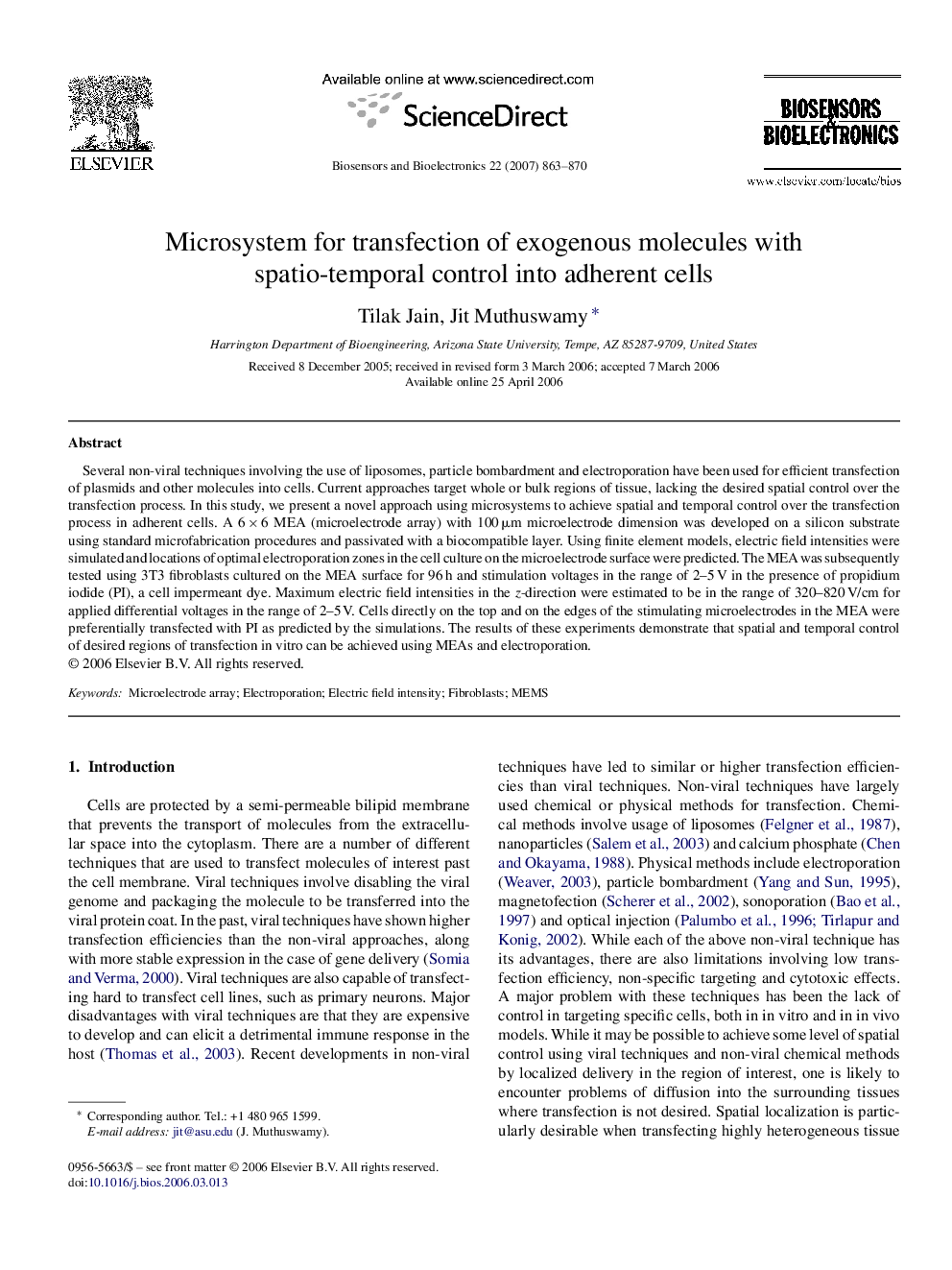| Article ID | Journal | Published Year | Pages | File Type |
|---|---|---|---|---|
| 869239 | Biosensors and Bioelectronics | 2007 | 8 Pages |
Several non-viral techniques involving the use of liposomes, particle bombardment and electroporation have been used for efficient transfection of plasmids and other molecules into cells. Current approaches target whole or bulk regions of tissue, lacking the desired spatial control over the transfection process. In this study, we present a novel approach using microsystems to achieve spatial and temporal control over the transfection process in adherent cells. A 6 × 6 MEA (microelectrode array) with 100 μm microelectrode dimension was developed on a silicon substrate using standard microfabrication procedures and passivated with a biocompatible layer. Using finite element models, electric field intensities were simulated and locations of optimal electroporation zones in the cell culture on the microelectrode surface were predicted. The MEA was subsequently tested using 3T3 fibroblasts cultured on the MEA surface for 96 h and stimulation voltages in the range of 2–5 V in the presence of propidium iodide (PI), a cell impermeant dye. Maximum electric field intensities in the z-direction were estimated to be in the range of 320–820 V/cm for applied differential voltages in the range of 2–5 V. Cells directly on the top and on the edges of the stimulating microelectrodes in the MEA were preferentially transfected with PI as predicted by the simulations. The results of these experiments demonstrate that spatial and temporal control of desired regions of transfection in vitro can be achieved using MEAs and electroporation.
